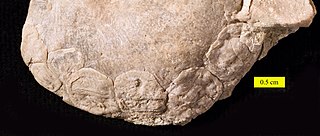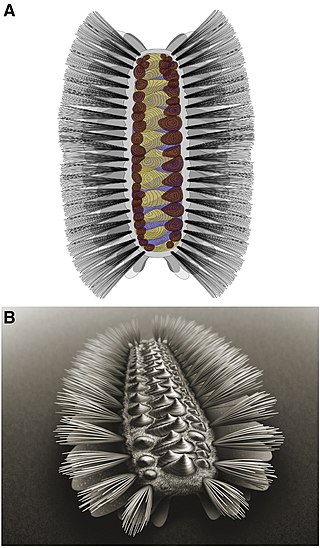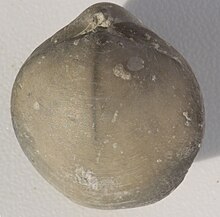Lyudmila Stanislavovna Smirnova is a retired pair skater who competed for the Soviet Union. With partner Andrei Suraikin, she is the 1972 Winter Olympic silver medalist. With her then-husband Alexei Ulanov, she is a two-time World silver medalist.
Smirnov or Smirnova is one of the two most common surnames in Russia. Smirnov is derived from an adjectival nickname smirnyj, that means "quiet, still, peaceful, gentle".

The Craniidae are a family of brachiopods, the only surviving members of the subphylum Craniiformea. They are the only members of the order Craniida, the monotypic suborder Craniidina, and the superfamily Cranioidea; consequently, the latter two taxa are at present redundant and rarely used.There are three living genera within Craniidae: Neoancistrocrania, Novocrania, and Valdiviathyris. As adults, craniids either live freely on the ocean floor or, more commonly, cement themselves onto a hard object with all or part of the ventral valve.
Kingena is an extinct genus of primarily Cretaceous-aged brachiopods of the family Kingenidae whose fossils are found in marine strata of Antarctica, Europe, and New Zealand. Early Paleocene-aged fossils from Denmark represent the youngest species.
Dictyothyris is an extinct genus of brachiopods that lived from the Middle Jurassic to the Early Cretaceous throughout what is now Europe and North Africa.

Tommotiids are an extinct group of Cambrian invertebrates thought to be early lophophorates.

Lingulida is an order of brachiopods.

The Logan Formation is the name given to a Lower Carboniferous siltstone, sandstone and conglomeratic unit exposed in east-central Ohio and parts of western West Virginia, USA.
Aemula is an extinct genus of brachiopods that lived during the Cretaceous period. The pedunculate brachiopod species Aemula inusitata had lived on the bodies of larger animals which served for enough feeding surface, since no large attachment sites were available on the Maastrichtian chalk of the sea floor. It was a very small animal, having a maximum length of 7 mm, and is believed to have been short lived as interpreted from its growth lines.
Dvuyakornaya Formation is a geological formation from the Cretaceous period in Crimea, south of Yalta. Remains found there include: ammonites, such as Berriasella, and brachiopods.
Tannuolina is a genus of tommotiid, belonging to the brachiopod stem lineage.
Trematidae is an extinct family in the brachiopod superfamily Discinoidea.

Cancellothyrididae is a family of brachiopods belonging to the order Terebratulida. It was first described by James Allan Thomson in 1926.
Megathyrididae is a family of brachiopods belonging to the order Terebratulida.
Thecidellinidae is a family of brachiopods belonging to the order Thecideida.
Ecnomiosa is a genus of brachiopods belonging to the family Kingenidae.
Crurithyris is an extinct genus of brachiopod belonging to the order Spiriferida and family Ambocoeliidae.
Leiorhynchus is an extinct genus of brachiopod belonging to the order Rhynchonellida and family Leiorhynchidae. Specimens have been found in South America, North America, and Russia in beds of middle Devonian to Mississippian age. The genus may have been adapted to dysaerobic environments, colonizing areas of reduced oxygen concentrations rich in organic matter. The genus has been used as an index fossil in North America.
Beecheria is an extinct genus of brachiopod belonging to the order Terebratulida and family Beecheriidae. Fossils of this genus have been found in Mississippian to Permian beds in Eurasia, Australia, North America, and South America. The genus was part of the Levipustula fauna characteristic of cold water conditions. "Nests" of Beecheria have been found in fossil low temperature hydrothermal vent communities from the early Carboniferous in Newfoundland.





